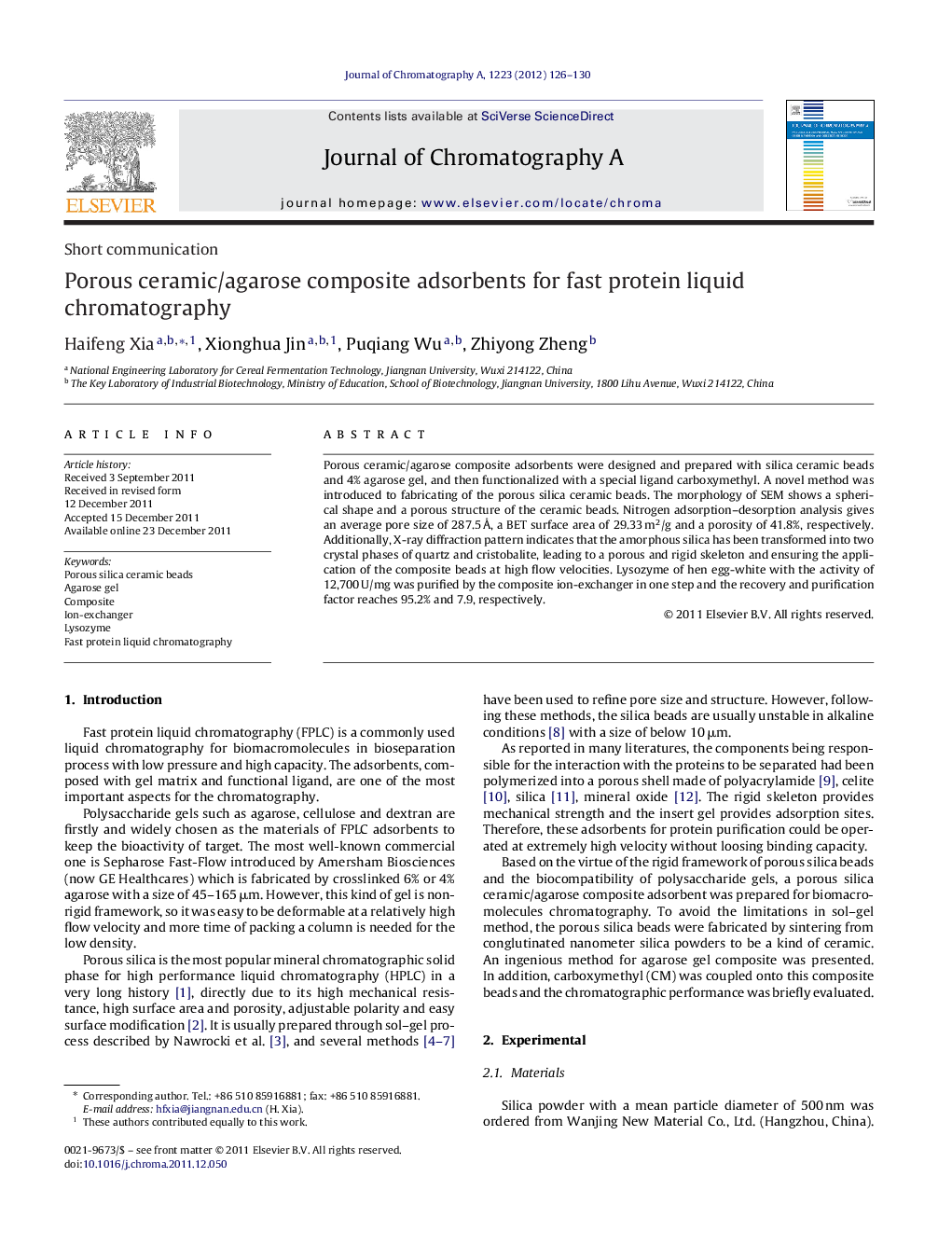| Article ID | Journal | Published Year | Pages | File Type |
|---|---|---|---|---|
| 1202986 | Journal of Chromatography A | 2012 | 5 Pages |
Porous ceramic/agarose composite adsorbents were designed and prepared with silica ceramic beads and 4% agarose gel, and then functionalized with a special ligand carboxymethyl. A novel method was introduced to fabricating of the porous silica ceramic beads. The morphology of SEM shows a spherical shape and a porous structure of the ceramic beads. Nitrogen adsorption–desorption analysis gives an average pore size of 287.5 Å, a BET surface area of 29.33 m2/g and a porosity of 41.8%, respectively. Additionally, X-ray diffraction pattern indicates that the amorphous silica has been transformed into two crystal phases of quartz and cristobalite, leading to a porous and rigid skeleton and ensuring the application of the composite beads at high flow velocities. Lysozyme of hen egg-white with the activity of 12,700 U/mg was purified by the composite ion-exchanger in one step and the recovery and purification factor reaches 95.2% and 7.9, respectively.
► A new kind of porous ceramic/agarose composite adsorbents were designed and prepared through three steps. ► A novel method with sodium alginate as binder and PEG as porogenic agent was introduced to fabricate of porous silica ceramic beads from nano silica powders. ► The morphology, pore property and physical properties were indicated by X-ray diffraction, scanning electron microscopy and nitrogen adsorption analysis, etc. ► The application of composite beads which functionalized by cation-exchange ligand CM for purification of lysozyme of hen egg-white shown that the porous ceramic/agarose composite adsorbents could be suitable for fast protein liquid chromatography.
